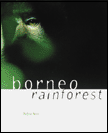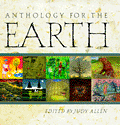Sometimes it can be difficult to see the forest for the smog, but the natural beauty revealed when the haze clears can be a good deal more powerful and inspirational than mere words (such as those in this sentence). So it goes with photographs and illustrations, which often make for the best storytelling. Books with pictures can help foster the environmentalist in the child, and inspire childlike wonder in the environmentalist.
Turn That Kid into an Earth First!er

Fighting for the Forest
by Gloria Rand, illustrated by Ted Rand
Henry Holt and Company, 1999, 32 pages
Fighting for the Forest, written by Gloria Rand and illustrated by Ted Rand, tells the story of a young boy who starts a campaign to save a beloved forest from being clear-cut. His efforts, however, come too late to save that particular forest (the realities of contracts and politics are simplified, but not omitted). Instead of giving up hope when his campaign fails, the boy is inspired to become a more vigilant activist. Colorfully illustrated with forest scenes from the Pacific Northwest, Fighting for the Forest shows the development of a young activist in a well-told and inspirational tale for junior enviros.
Get a Buzz from These Coffee-Table Books

Living Planet: Preserving Edens of the Earth
by Frans Lanting, et al.
Crown Publishers, Inc., 1999, 256 pages
The World Wildlife Fund’s Living Planet: Preserving Edens of the Earth features spectacular photographs by Frans Lanting, Galen Rowell, and David Doubilet, illustrating the diverse beauty of wilderness and wildlife on every continent. A brief foreword by Walter Cronkite describes the earth’s present environmental peril in terms of a war between humans against nature, with humans well on the way to a bitter, polluted victory — a disturbing metaphor, but Cronkite makes his point. Every photo in the book is accompanied by a short description of the ecoregion and wildlife depicted, but the images rightly dominate this collection. Each photographer brings a unique style to the book — while Lanting integrates animals with their habitat in his photos, underwater photographer Doubilet focuses on life below the surface of the sea, and Rowell captures breathtaking natural light in his wilderness shots. From Canada to the Caribbean, Tibet to Tasmania, the book brings together monarch butterflies in Mexico and turtles off the coast of Tanzania, reminding the reader of the breathtaking but fragile varieties of life. A coffee-table book with a conscience.

Borneo Rain Forest
by Mattias Klum
Cronicle Books, 1998, 192 pages
For a closer look at one of the world’s most diverse and endangered ecosystems, check out Borneo Rain Forest by Swedish photographer Mattias Klum. The photos in the book range from aerial shots of the rainforest canopy, taken from a hot air balloon, to close-ups of elephant toes and the inside of an insect-eating Low’s Pitcher Plant. Heavy-handed, groan-inspiring passages — such as “Fatigue, inadequacy, euphoria, and the joy of discovery, all at the same time. This is Borneo!” — accompany some of the photographs, detracting from the book’s overall effect. But thankfully these passages are short and infrequent. As is generally the case in the coffee-table genre, the photography carries the book. And Klum’s photos are truly magnificent. A few diary entries from Klum’s year-long expedition are found at the end; written in a wholly different style than the ponderous prose in the rest of the book, they offer an informative and entertaining glimpse into the tremendous effort involved in the book’s production. Don’t miss the several great photos of wild bearded pigs.
Eco-lectic

Anthology for the Earth
edited by Judy Allen.
Candlewick Press, 1998, 96 pages
In Anthology for the Earth, Judy Allen has assembled an eclectic array of quotations, excerpts, and poems from around the world, all loosely linked by environmental themes. In her introduction, Allen calls her collection “statements to live by — messages from the wise — warning notices and useful signposts.” The diverse sources range from Buddhist scripture to Ovid’s Metamorphoses, from naturalist John Muir to novelist Alan Paton. They vary in length from aphorisms to short stories, with several longer pieces suitable for reading aloud clustered at the book’s end. Each selection is accompanied by colorful artwork from a different artist, challenging the notions that serious books do not need images and that children cannot enjoy serious books. Anthology for the Earth is sometimes meditative, sometimes inspirational, and beautifully illustrated from beginning to end.


